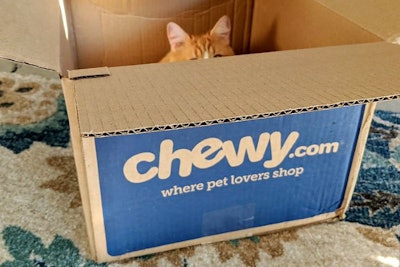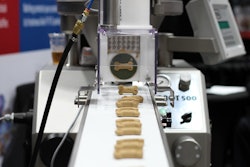
The world today is awash in challenges, and the pet food industry certainly has its share, including significant inflation, supply chain disruptions and labor shortages. With those same challenges affecting nearly every other industry, the ultimate result is increasing financial burden for consumers, including pet owners.
Still, amid all the problems and negative impacts, the pet food and pet care markets remain resilient, according to recent retail data – albeit with significant caution signs to heed.
US pet specialty sales grew in 2021
Focusing on the U.S. market, the data are obviously not representative of pet food and pet care worldwide; but as the largest market by far, the U.S. does have a strong influence on the global pet picture.
To start, sales for pet specialty retailers and “e-tailers” exceeded US$31 billion in 2021, representing 18% growth year over year (YOY), according to Packaged Facts. Its new report, “U.S. Pet Market Focus: Pet Stores & Pet Specialty Retailing,” said the “online boom” in pet food and pet care sales contributed most to the increase, led by Chewy.com, but brick-and-mortar pet specialty sales rose, too.
Yet, “it’s not all smooth sailing,” said a press release about the report. “Inflation remains a primary concern across consumer goods markets, with a range of factors combining into the perfect storm of economic pressures.” Those factors include challenges in acquiring ingredients, packaging materials and other raw inputs that our industry is all too familiar with, along with shipping delays, shortages of shipping containers and truck drivers.
“Pet product marketers must contend with demand for ingredients that are increasingly difficult to acquire,” the release said. “At times, store shelves remain unfilled and force pet owners to pay more for or to purchase different products or brands than they typically would, a challenge that can disproportionately affect key pet product growth areas such as fresh (refrigerated/frozen) pet food.”
It’s also important to keep in mind that the report is based on 2021 data; it’s now September 2022, and inflation is taking its toll on pet food prices, consumer finances and possibly even pet adoption and ownership. In fact, Chewy has acknowledged its own challenges this year, including a slowdown in demand spurred by economic uncertainty for its consumers. While it announced increased sales YOY for second quarter 2022, the company has reduced its outlook for 2022 annual sales from US$9.9 to $10 billion, down from its June forecast of US$10.2 to $10.4 billion.
Sales, and inflation, strong in US grocery channel
That Chewy experienced a rise in sales despite declining demand also speaks to the fact that pet food and product producers are having to pass on their higher costs to consumers. In the U.S. supermarket channel, growth in pet food and treat sales have come mainly from rising prices, according to an article by Mark Hamstra in Supermarket News. He quoted Shep Kroner, director of customer insight for UNFI Brands+, the private-label division of distributor United Natural Foods Inc.
“Inflation has had a major impact on the category,” Kroner said, adding that in the past year, average unit prices have increased 14% for dog food and treats and 15.5% for cat food and treats.
Another executive quoted, Jeff Tawson, category manager for Raley’s, a grocer in the western U.S., said he’s seen pet food brands raise their prices 7% to 17%, including some issuing multiple increases in the past 12 months. That has kept sales high, but unit volumes “remain a major concern in both dog and cat segments.” Plus, supply chain disruptions have led to fill rates (replenishment of products on shelves) below 60%, particularly for value-priced brands.
Dry dog and cat food stable, less likely to see trading down
There is good news: Only 7% of U.S. consumers surveyed by 84.51°, a data research firm that’s a subsidiary of Kroger Co., said they are cutting back on pet food purchasing, compared to 52% of consumers cutting back on other categories. Hamstra quoted the data from Barbara Connors, vice president of commercial insights for 84.51°.
Connors also reported that 20% of survey respondents said they’re willing to trade down to lower-cost brands of pet food, compared to 46% who said they are opting for lower-cost brands overall. At 10%, only baby care was lower than pet food in terms of consumers being willing to purchase lower-priced brands.
In addition, Connors said “dry dog food and dry cat food have been the most stable subcategories in terms of sales.” Yet treats may be another matter. “Dog treats is the space where we are seeing the highest customer behavior around deal-seeking,” Hamstra quoted Connors saying. She added that private-label treats also have been gaining sales share in 2022.
In terms of another subcategory, fresh and frozen pet food: Despite Packaged Facts’ concern about inflation and supply chain challenges disproportionately affecting it, in his article Hamstra reported that supermarkets like Raley’s are still seeing growth in such products.
















